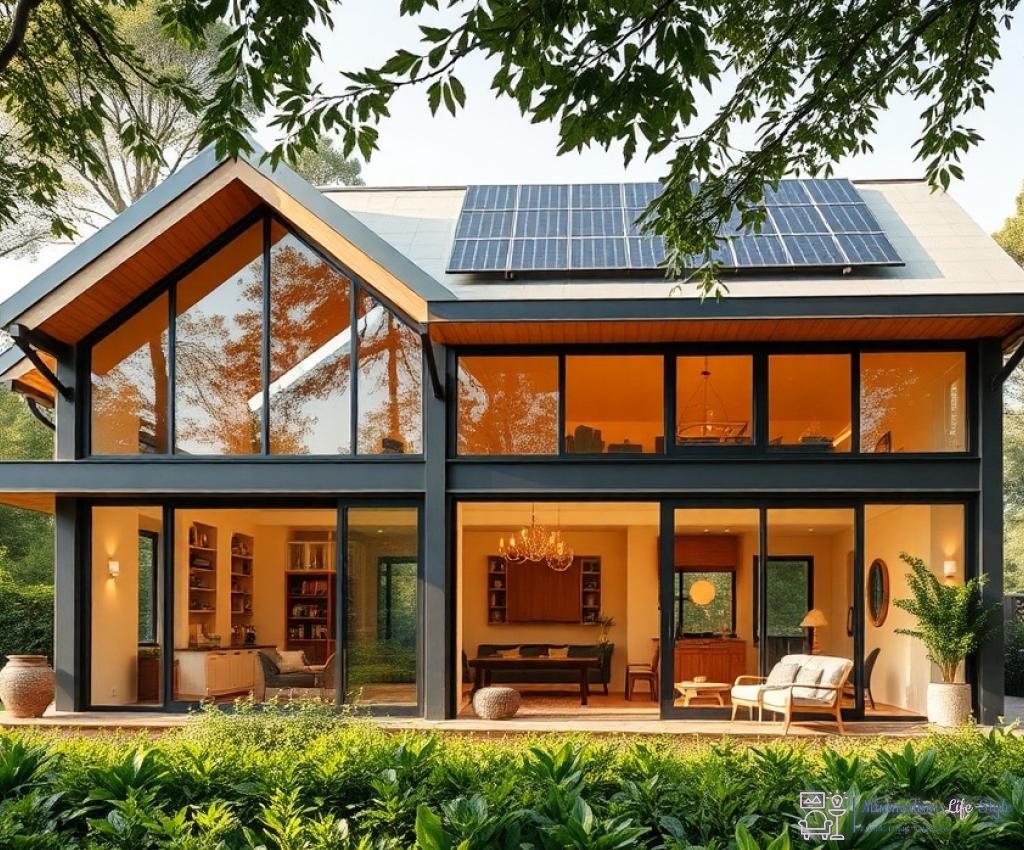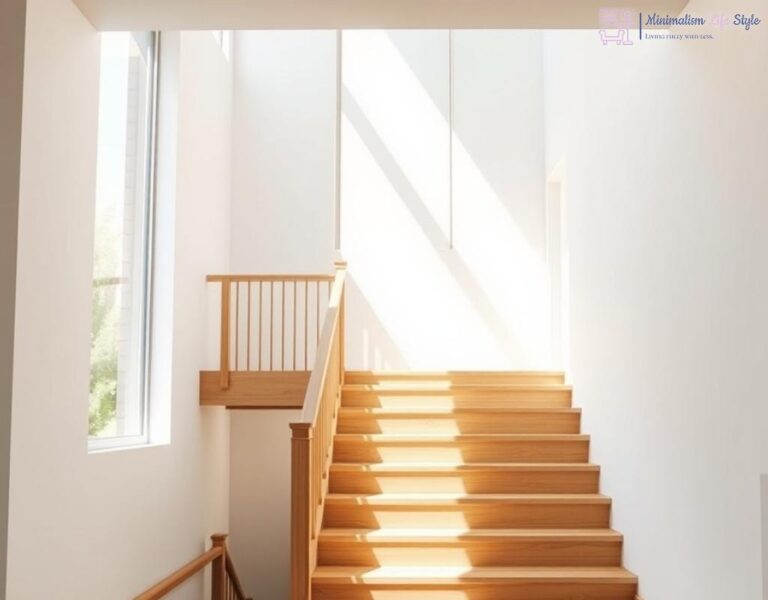Harnessing Passive Solar Design

Understanding the Power of the Sun
When it comes to maintaining a comfortable indoor climate, many homeowners overlook the incredible potential of passive solar design. This approach utilizes the natural energy from the sun, minimizing the need for traditional heating and cooling systems. By integrating smart architectural choices and materials, you can drastically reduce your energy consumption while enhancing your home’s comfort.
Key Elements of Passive Solar Design
Implementing passive solar design requires a keen understanding of how sunlight interacts with your home throughout the year. Here are some essential elements to consider:
- Orientation: Positioning your home to maximize sunlight exposure can dramatically improve energy efficiency.
- Window Placement: Strategically placed windows can capture heat in winter and minimize it in summer.
- Thermal Mass: Using materials like concrete or brick can help store and distribute heat.
- Insulation: Good insulation is crucial for retaining heat during colder months and keeping your home cool in warmer months.
Designing for Efficiency
By harnessing these principles, you can create a space that remains comfortable year-round without relying heavily on mechanical systems. Consider the following design strategies to fully exploit the benefits of passive solar:
| Strategy | Description |
|---|---|
| Overhangs | Use roof overhangs to block high summer sun while allowing lower winter sun to enter. |
| Natural Ventilation | Design windows and openings to promote airflow, reducing the need for air conditioning. |
| Green Roofs | Incorporate vegetation to insulate your home and reduce heat absorption. |
By adopting these strategies, you not only create a more sustainable home but also contribute to a healthier planet. Embrace the power of passive solar design today and experience the benefits for years to come!
Efficient Insulation Techniques
In the quest for a cozy and energy-efficient home, efficient insulation techniques play a crucial role. These techniques not only help maintain a comfortable indoor environment but also contribute to significant energy savings. Understanding how to effectively insulate your home can make all the difference when it comes to minimizing the reliance on heating and cooling systems. Let’s explore some innovative approaches that can transform your space into an energy-efficient haven.
Transformative Insulation Materials
When considering insulation, the choice of materials is paramount. Traditional fiberglass insulation, while effective, is being rivaled by modern alternatives that offer superior performance. For instance, spray foam insulation expands upon application, sealing gaps and creating an airtight barrier that reduces energy loss. This innovative solution not only enhances thermal resistance but also acts as a sound barrier, promoting tranquility in your living spaces.
Another noteworthy option is cellulose insulation, made from recycled paper products. Not only is it an eco-friendly choice, but it also boasts excellent thermal performance and can help regulate humidity levels within the home. Such materials not only keep your home warm in the winter and cool in the summer but also support sustainable living practices.
Strategic Insulation Placement
Beyond the materials used, the placement of insulation is equally important in achieving optimal energy efficiency. Insulating critical areas, such as attics and basements, can yield substantial benefits. For instance, properly insulating the attic can prevent heat from escaping during winter months, while also keeping your home cooler in the summer.
Likewise, considering insulated doors and windows can significantly reduce energy loss. Double or triple-glazed windows, coupled with insulated frames, create a formidable barrier against outdoor temperatures. By sealing leaks around doors and windows, you not only enhance your home’s comfort but also lower energy costs dramatically.
Incorporating these efficient insulation techniques into your home design not only simplifies climate control but also promotes a sustainable lifestyle. As you embrace these innovative practices, you will find that maintaining the perfect indoor climate is both achievable and rewarding.
Smart Thermostat Innovations
As we continue to explore the intersection of technology and sustainable living, one innovation stands out in the realm of climate control: smart thermostats. These devices are more than just temperature regulators; they represent a significant leap toward achieving energy efficiency and comfort in modern homes. By intelligently managing heating and cooling systems, smart thermostats can adapt to your lifestyle, ensuring that your home remains comfortable while minimizing energy usage.
Understanding the Power of Smart Thermostats is essential in realizing their potential benefits. Unlike traditional thermostats, which require manual adjustments, smart thermostats learn from your behavior and preferences. They analyze patterns in your heating and cooling needs, allowing them to optimize energy consumption based on real-time data. For instance, if you typically leave home during the day, a smart thermostat will adjust the temperature accordingly, reducing energy waste while you’re away. Furthermore, many models allow you to control your home’s climate remotely through smartphone apps, giving you the flexibility to make adjustments even when you’re not at home.
Enhanced Features for Sustainable Living make smart thermostats an attractive choice for eco-conscious homeowners. Many of these devices come equipped with features such as geofencing, which utilizes your smartphone’s location to trigger temperature adjustments when you leave or arrive home. This means your home will always be at the ideal temperature when you need it, without unnecessary energy expenditure. Additionally, some smart thermostats provide energy reports that offer insights into your usage patterns, helping you identify ways to further reduce your carbon footprint.
Moreover, the integration of smart thermostats with other home automation systems amplifies their efficiency. For example, when paired with smart blinds, the thermostat can adjust the indoor temperature based on sunlight exposure, further enhancing energy savings. The synergy between these technologies not only simplifies climate control but also fosters a sustainable lifestyle, allowing homeowners to contribute positively to the environment.
Eco-Friendly Heating Alternatives
As the quest for sustainable living intensifies, homeowners are increasingly seeking eco-friendly heating alternatives that not only reduce their carbon footprint but also offer significant cost savings. With a variety of innovative solutions available, it’s easier than ever to create a warm and inviting atmosphere in your home without relying on conventional fossil fuel heating methods. Let’s dive into some of the most effective alternatives that align with your commitment to the environment.
Innovative Heating Solutions for a Greener Future
Embracing eco-friendly heating alternatives is not just about switching systems; it’s about adopting a lifestyle that prioritizes sustainability while ensuring comfort. From harnessing renewable energy sources to improving energy efficiency, here are some remarkable options that can transform your home heating experience:
- Heat Pumps: These devices work by transferring heat rather than generating it, making them highly efficient. Ground-source and air-source heat pumps can provide both heating and cooling, using renewable energy from the earth or air.
- Solar Thermal Systems: Utilizing solar panels to capture sunlight, these systems convert solar energy into heat for water or space heating. They can significantly reduce reliance on traditional heating methods.
- Biomass Boilers: By burning organic materials such as wood pellets, these systems offer a sustainable heating solution that recycles carbon dioxide, making it a carbon-neutral option.
- Radiant Floor Heating: This efficient method involves heating the flooring, providing consistent warmth without the need for bulky radiators. It can be powered by electricity or hot water systems.
Comparing Eco-Friendly Heating Options
To make an informed decision, it’s essential to compare the various heating alternatives available. Below is a table that outlines key features, efficiency levels, and environmental impacts of each option:
| Heating Alternative | Efficiency | Environmental Impact | Initial Cost |
|---|---|---|---|
| Heat Pumps | 300-400% | Low (uses renewable energy) | Moderate to High |
| Solar Thermal Systems | 70-90% | Very Low (renewable source) | Moderate to High |
| Biomass Boilers | 70-90% | Low (sustainable fuel source) | Moderate |
| Radiant Floor Heating | 80-90% | Low (energy-efficient) | Moderate to High |
Embracing Change for a Sustainable Tomorrow
Transitioning to eco-friendly heating alternatives is more than an investment in your home; it’s a pledge to protect our planet for future generations. By evaluating the options available and choosing the solution that best fits your lifestyle, you can enjoy a comfortable living space while also contributing positively to the environment. Whether you opt for the efficiency of heat pumps or the renewable energy of solar thermal systems, each choice leads you one step closer to a sustainable and energy-efficient home.
Maximizing Natural Ventilation
Unlocking the Power of Fresh Air
In the pursuit of a comfortable and energy-efficient home, maximizing natural ventilation emerges as a game-changer. This approach not only elevates your indoor air quality but also reduces reliance on mechanical cooling systems. By harnessing the natural flow of air, homeowners can create a refreshing atmosphere that fosters well-being while keeping energy costs in check.
Strategies to Enhance Airflow
To truly capitalize on natural ventilation, it’s essential to implement strategic design choices that promote airflow throughout your home. Here are some effective strategies that can transform your living space:
- Cross Ventilation: Position windows and openings on opposite sides of your home to facilitate a breeze, allowing cool air to flow in while pushing warm air out.
- Stack Ventilation: Utilize the principles of buoyancy by designing spaces with high ceilings and operable skylights, creating an upward movement of warm air that pulls cooler air in from lower levels.
- Window Design: Opt for casement or awning windows that can be opened wide to maximize airflow, especially during peak cooling hours.
- Landscaping: Incorporate trees and shrubs strategically around your home to provide shade and enhance natural wind patterns, creating a cooler microclimate.
Creating a Breezy Home Environment
Embracing natural ventilation requires not just design but a mindful approach to daily living. By understanding how to manipulate your environment, you can maximize the benefits of fresh air. Here are a few tips to keep in mind:
- Open windows in the early morning and late evening when temperatures are cooler, allowing for a refreshing breeze.
- In warmer months, close windows during the heat of the day to trap cooler air inside, then open them again as temperatures drop.
- Consider installing ceiling fans to help circulate air effectively, enhancing the comfort of your home without cranking up the air conditioning.
By integrating these strategies, you’re not just optimizing your home’s air quality; you’re creating a sanctuary that thrives on the beauty of nature. Through mindful design and intentional living, maximizing natural ventilation is not just an option—it’s a lifestyle choice that cultivates comfort and sustainability.




